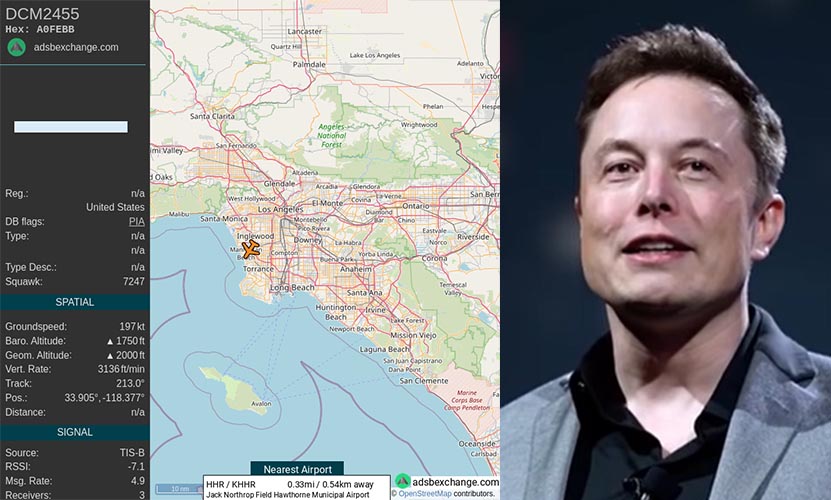Musk offered teen $5,000 to shut down his flight tracker bot on Twitter.
A 19-year-old Jack Sweeney won a bit of internet fame when Protocol published a story about one of his Twitter bots. The college student maintains ElonJet, a tracker that tweets out when Elon Musk’s private jet takes off and lands.
Last fall, the entrepreneur contacted Sweeney about ElonJet. “Can you take this down? It is a security risk,” he said, according to Protocol.
Musk told Sweeney he would give him $5,000 to delete the account and keep “crazy people” from finding out his whereabouts. Sweeney made a counteroffer. “Any chance to up that to $50k? It would be great support in college and would possibly allow me to get a car maybe even a Model 3.”
Musk told him he would think about it, but the two haven’t spoken since. At the time, Sweeney told Protocol he wasn’t bothered by Musk ghosting him. His work on ElonJet had taught him how to code and landed him a part-time job with a company called UberJets.
Now the teen seems to have changed his tune. In a new interview with Business Insider, he said he decided to go public with Musk’s offer after the billionaire seemingly lost interest in cutting a deal. “He went the opposite way of me, so why wouldn’t I go the opposite way of him?” he asked the publication. “I’ve done a lot of work on this and $5,000 is not enough,” Sweeney said. He told Business Insider the initial offer wouldn’t replace the “fun” he’s had working on the bot.
It doesn’t seem like Musk has any interest in negotiating with Sweeney. Following their initial conversation, the Tesla and SpaceX CEO implemented some of the technical advice Sweeney gave him to make his jet harder to track. At the time, Musk reportedly also told Sweeney it didn’t “feel right to pay to shut this down.” He probably has a point.
Sweeney uses data from the ADS-B transponders present on most aircraft which show a plane’s location in the air in real time as charted on the ADS-B Exchange.
Sweeney’s bots can use a plane’s altitude, combined with how long ago the data was received, to determine when it is taking off or landing. They can then cross-reference latitude and longitude with a database of airports to determine where the plane is leaving or headed.
And though Sweeney’s bots can’t pull from blocked FAA data to figure out where a plane plans to go, they can cross-reference the real-time ADS-B data with another website that posts anonymized versions of the FAA flight plans.
This allows the bot to match the plane it is tracking in real time to the anonymized FAA flight plans and determine each plane’s intended destination. This information is all entirely public, and can be used to track most private aircraft.


